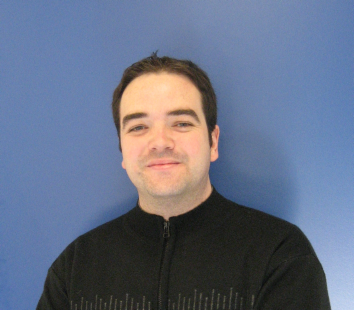High Pressure: Challenge for Lab-on-a-chip Technology
Promotion date: 5 April 2007
| We developed a microfluidic system to perform chemical reactions on a very small scale and at a high pressure. That was quite a challenge, for there was nothing in literature to support our work: not anything on microsystems that can withstand high pressure. A microsystem for chemical reactions is nothing but a tiny glass chip (microreactor) with channels, and obviously they break under high pressure. And the second challenge was to actually perform the chemical reactions under high pressure in them. |
Why is the high pressure so important?
In some reactions it turned out that the application of high pressure improves the yield, the selectivity, or increased the speed of chemical reactions.
The application of high pressure in chemistry has been limited almost exclusively to academic research, In industry, pressure is hardly ever used because of safety and instrumentation issues, but it is an entirely different matter if these reactions are performed in a microsystem. When we tested our high pressure microreactors we only put a cup over the microreactor and everything was completely safe. The actual problem that needed solving is that you need really a high pressure to create an effect in the chemical reaction itself. We achieved a pressure of 600 Bar, which is not considered a very high pressure compared with conventional systems, but in a microreactor it is a lot!
So you succeeded in what you set out to do?
It took quite some doing, but we succeeded. The main thing was to develop a microreactor for high pressure and that we did. But not only that: we tested it with several reactions and were able to study fluids under high pressure.
We even believe that our microreactor can resist higher pressures yet, but here we do not have the suitable pressure generators to apply them.
This all sounds as if it could be very important to industry.
Yes. My project was financed by STW, so industry was involved in this. I have presented my work to Organon, Akzo Nobel and other companies. They were certainly interested.
But to change to lab-on-a-chip technology is a major investment.
Did you get any publications?
I got four articles published and another four are waiting to be published. So that is good considering that results only came out at the end of the second and beginning of the third year.
How did you end up doing a PhD here?
I did inorganic chemistry and qualified at the Universidad Autonoma de Madrid.
I even did 2 years of a PhD in Spain, but at that time a PhD student in Spain is considered as nothing but a student, in other words: you do not have any social benefits. So I wanted to go abroad, where you get a proper contract.
I had a friend here and she brought a possible PhD position to my notice. The project seemed interesting, although I was no expert, but then again, I did not need to be because lab-on-a-chip is so new.
If somebody asked me in those first two years whether I liked it I would have said NO.
I was even thinking of giving up.
So what did you do?
I just talked to everybody. That is the nice thing of this place, once you break the barrier you can establish very good collaborations with other groups. And that was exactly what made this project possible, the close collaboration between groups.
The Mesa+ meetings were a great help too.
What are you going to next?
I will continue doing research. I go to Dublin to work at DCU (Dublin City University) at the development of microreactor technology for fermentation processes.
For the summary of the thesis, click here
Voor de samenvatting van het proefschrift, click hier

